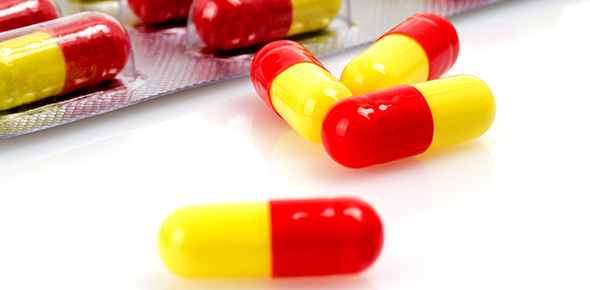Related Flashcards
Related Topics
Cards In This Set
| Front | Back |
|
What is an infection?
|
The disease state as a result of a pathogen in or on the body.
|
|
What is the Cyclic Process with 6 components?
|
1. Infections Agent2. Reservoir3. Portal of exit4. Means of Transmission5. Portals of Entry6. Susceptible host
|
|
What are the 4 prevalent infections agents?
|
1. Bacteria: gram + or -. If it needs O2 to survive it is aerobic, anaerobic if not.2. Virus - not treatable3. Fungus - plant like organism (mold, wring worm or yeast)4. Protozoa
|
|
What is needed to cause disease?
|
1. Certain # of organisms2. Need virulence (ability to cause disease)3. Length of contact (amount of intimacy)4. Individuals immune system competence
|
|
What is the reservoir?
|
Place where organism grows and multiplies. Examples: humans, animals, food, water, soil, inanimate objects. (Humans can show SIGNS AND SYMPTOMS or they can just be a CARRIER.
|
|
What must a reservoir have in it?
|
Food, oxygen, water, temp, pH and darkness. A medium for bacteria to grow: warm, moist, dark.
|
|
What are some examples of portals of exits in humans (usually point of entry too)?
|
Mucous membranes, respiratory tract, urinary tract, gastrointestinal tract, reproductive system, blood, tissue.
|
|
What are the means of transmission?
|
1. Contact - direct and indirect2. Air - Dust and droplet (sneezing)
|
|
What are some vehicles in the chain of infection?
|
Contaminated items: blood, water and food.
|
|
What are some vectors in chain of infection?
|
External and internal transmission.
|
|
What are some factors to being a susceptible host for an infection?
|
1. Non-intact skin/ mucous membranes2. Abnormal pH levels3. Abnormal WBC count4. Personal factors - hereditary issues, age, sex and race5. Lack of immunizations
|
|
What are some factors that influence susceptibility to being a host for infection?
|
1. Lifestyle habits - smoking, poor nutrition, poor hygiene2. General habits3. Stress - decreases normal defense mechanisms4. Invasive or indwelling medical devices - catheter, pacemaker, PICC lines, IV's, insulin pumps, and fistulas
|
|
What are the stages of infection?
|
1. Incubation: interval between pathogens invasion of body and appearance of signs of infection2. Prodromal stage: most infectious period. Early signs or symptoms, but they can be vague and non-specific. 3. Illness: specific signs and symptoms that indicates full stage of illness (Signs and symptoms can be localized or systemic - throughout the entire body)4. Convalescence: healing stage
|
|
What are the body's defenses to infections?
|
1. Normal flora - keeps bacteria from invading body (ex. GI tract)2. Organ system defenses3. Inflammatory response4. Immune response
|
|
What is inflammation?
|
Protective mechanism to neutralize, control or eliminate an organism. During this stage, fluid, blood and nutrients come to site of initial invasion. This allows tissue to repair.
|





